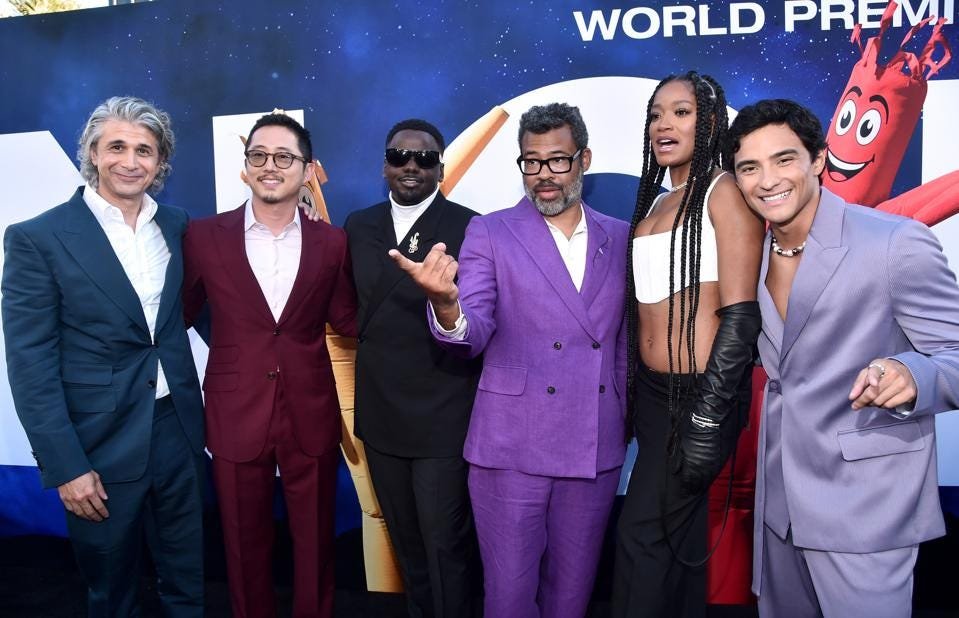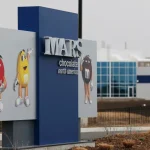Jordan Peele’s ‘Nope’ Participated In NBCUniversal’s Sustainable Production Program

Jordan Peele’s new horror film, Nope, took part in NBCUniversal’s sustainable production program to help lower all emissions across the entire production and make it as efficient as possible. The film integrated environmental best practices into all on-set protocols.
“Reducing our environmental impact throughout production was extremely important to us, and while we are proud of what we were able to accomplish on Nope, I am confident that we can do even better,” said Nope producer Ian Cooper.
He continued, “We are hyper-aware of the influence our industry has, and our production team is committed to setting a new bar and crafting better precedents with the hope that it will encourage all our filmmaking peers to do the same.”
As filming took place primarily on a ranch, effectively in the middle of nowhere in California, not using fossil fuel generators became a task in itself. The production team couldn’t use the electrical grid as it was a fire hazard, so instead, they opted to utilize renewable diesel fuel, which has approximately 80% less lifecycle carbon emissions than standard diesel. The team also used LED lighting on-set which is 70% more efficient than a regular lighting set-up.
An electric motorcycle was used, as well as charging stations with a western theme, and multi-layered recycling bins. There was also a section in the credits listing their sustainability efforts to help inspire filmmakers and studios.
A particularly key element in reducing waste was the lack of plastic bottles. The team managed to use reusable aluminum bottles saving the use of 170,000 plastic water bottles. In post-production, they recycled over 5,000 aluminum cans, with the proceeds going towards Covid-19 relief in the local area.

HOLLYWOOD, CALIFORNIA – JULY 18: (L-R) Win Rosenfeld, Steven Yeun, Daniel Kaluuya, Jordan Peele, … HOLLYWOOD REPORTER VIA GETTY IMAGES
Talking to sustainability champion, Elliott Talbott, the CEO of FusionOne Energy Corporation, he said, “Efforts like this are very important to promote. I feel oftentimes people ignore the problem and want to do the easiest thing if they don’t understand the nuances as to why something is important. And that is what Nope has done, try and make their efforts popular and noteworthy to encourage further change. It’s a vital initial step.”
“We definitely have a massive plastic problem on this planet. I truly don’t think people understand the gravity of the situation and where it will lead. The implementation of programs like this is not only educational but also promotional and my hope is that it will catalyze others to take similar action.”
Talbott is a former military leader and veteran of Iraq and Afghanistan, he previously operated at a senior leadership level in Facebook’s Connectivity Labs and led key elements of the day-to-day operations of Facebook’s bleeding edge solar electric Project Aquila HALE communications platform, he is very familiar and has very close relationship with renewable and emerging technologies.
See related article: Sustainability Takes Flight in Jordan Peele’s ‘Nope’
He now runs FusionOne whose mission is to divert plastic waste from landfill and process it into clean, zero-emission hydrogen.
He explained, “Fundamentally, we’re recovering the resources poured into making plastic, which has a rich mixture of long chain polymers made up of valuable chemical elements. Our system operates with zero emissions, everything is utilized, however, our main focus is on recovering the high percentage of hydrogen that is produced from our thermal decomposition process. We have multiple uses for this energy dense element including power generation, creating ammonia, supplying road fuel to hydrogen fuel cell vehicles (HFCV) and in this case potentially supplying film set generators.”
“We’ve spent substantial time and effort developing and optimizing our system to the efficient extraction of these resources but also the ease of deployment of our system. Designed to deploy anywhere via the use of standardized ISO skids, the HydroPlasTM system can be dropped into municipal waste sites, near local recycling centers or at sites with a high demand for hydrogen.”

CASTEL VOLTURNO, CASERTA, ITALY – 2021/01/30: Turtle made with waste bags by the Volunteers of the … LIGHTROCKET VIA GETTY IMAGES
North America sends millions of tons of plastic to landfill every year, so there’s certainly no shortage of plastic to process, and these numbers are not likely to reduce anytime soon. Current recycling processes aren’t enough and more companies are needed to solve our waste issues.
“We have the capability of processing hundreds of tons of plastic waste per day into locally available hydrogen with zero carbon emissions,” Talbott said.
Hydrogen fuel cell vehicles are still in their infancy, Toyota, Hyundai, Tevva and Hyzon Motors are the most advanced with thousands of orders, but delivery will take time and requires a refueling infrastructure to accelerate HFCV uptake.
Talbott continued, “Not only is hydrogen a highly effective option as a transport fuel, but it is also the strongest for those larger vehicles requiring higher energy densities, such as class 8 trucks and buses. We all know the entertainment industry has to use a lot of large vehicles for transport. There’s certainly viability there. Additionally, on set power generation can come from the use of static fuel cell generators or small hydrogen ICE generators all running on hydrogen derived from plastic waste, its all possible and will make a huge difference to the film industries carbon footprint.”

FRANKFURT AM MAIN, GERMANY – SEPTEMBER 11: A hydrogen generator is on display at the Hyundai booth … GETTY IMAGES FOR HYUNDAI
Waste recycling, and specifically plastic recycling, still has very poor coverage in North America with approximately 27 million tons of the approximate 36 million tons of plastic produced going to landfills in 2018. This vast quantity is the new plastic produced, existing plastic waste in the global environment equals the weight of 25,000 empire state buildings and it’s predicted that our plastic usage is going to accelerate even with the various efforts on banning items like single-use straws.
Diverting new plastic waste as early after use as possible will, at the very least, slow the growth of this environmental disaster however, it does little to tackle that which already exists and, for the most part, is contaminated by seawater. This contaminated plastic is far more difficult to recycle with incineration being the only real option of any scale at the moment.
This works well in the few countries where advanced recycling is receiving the vast funding required due to social and political pressures, however, this isn’t the case for those emerging countries which, until recently, received much of our waste in offshore shipments. In the United States, there is an obligation to support clean-up of what has been previously produced and hidden away from sight with many of the receiving countries not having the strict waste rules that western countries benefit from.
Partnering with waste recovery organizations is key for FusionOne and other entities. Working with Hollywood, and their sometimes-sizable environmental impact could be a good start. Tackling plastic waste locally also reduces the need for large CO2 emissions from transportation and will slow the need for new landfill sites.
These efforts, and more, on the film Nope helped it earn a Gold Seal from the Environmental Media Association, which recognizes behind-the-scenes sustainability initiatives. There may be a time when partnerships and endeavors like this are mandated in Hollywood as the understanding of the issue continues to scale.
Source: Forbes










